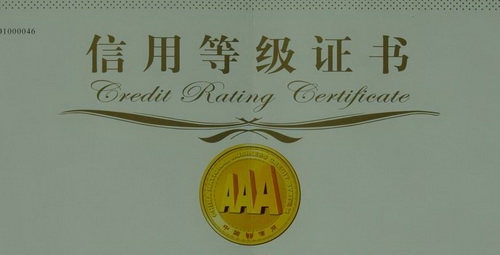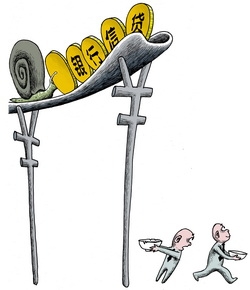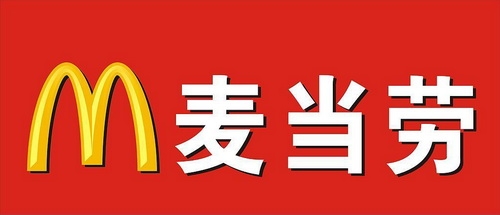

Highlights from this week's issue of the Economic Observer

A Look at China’s Credit Rating Agencies
News, Cover
~ In early Aug, Dagong Global Credit Rating Co., Ltd awarded China’s Ministry of Railways a triple A (AAA) long-term credit rating. The award of the highest possible credit rating to the railway ministry coincided with a crisis of public trust in the powerful ministry following the deadly Wenzhou train crash and also as questions about whether the ministry would be able to repay its massive debts began to be raised in the press.
~ Although Dagong responded to media reports that questioned their AAA rating, it appears as if their response has not done enough to remove the public’s confusion about the situation. This confusion has extended beyond Dagong to the rest of China’s rating industry. Many people seem unclear about how these agencies actually calculate their credit-ratings.
~ According to research carried out by one regulatory department, over the past five years, 339 out of 953 ratings provided by domestic credit rating agencies to companies issuing bond have been altered, of these 339 rating adjustments, 327 involved a raising of the credit rating.
~ “If all companies get a triple A rating, then what is the point of the ratings industry?” asked Liu Yang, a former employee at a Chinese credit rating company.
~ This situation reflects the pressure that credit rating agency’s are under to survive. Most executives in the industry said that the current rating industry is not profitable, with most companies being paid about 250,000 yuan per rating.
~ Taking the bonds issued for building urban infrastructure as an example, in 2009, although the macroeconomic situation was poor, the major rating companies competed with each other to offer the best ratings.
~ The emergence of less than objective ratings is connected to the struggle of these agencies to survive in a cut-throat industry.
~ ““Currently, no one company has a strong enough reputation to make it, that means the competition focuses on fighting for market share, whoever clinches the deal first will be able to seize a greater market share. If a company tries to go against this trend, then this company will disappear from the market,” said Liu.
~ More importantly, “ratings are supposed to be awarded via an objective and impartial process, but once the process has been corrupted by administrative interference, this impacts on the ability of the market to respond to these signals,” this is one of the reasons that Liu Yang chose to leave the industry.
~ Another problem plaguing China’s credit rating industry is that it’s regulated by multiple government agencies. Different kinds of bonds are regulated by different departments, with corporate bond ratings regulated by the China Securities Regulatory Commission (CSRC) and enterprise bonds regulated by the National Development and Reform Commission (NDRC), and so on.
The largest credit rating agencies in China are CCXI, China LianHe Credit Rating Co., Ltd and Dagong Global Credit Rating Co., Ltd. Those which hold all three licenses (that is they have qualifications issued by the China Securities Regulatory Commission, the People’s Bank of China and the National Development and Reform Commission) are the Dagong Global Credit Rating Co., Ltd, Shanghai Brilliance Credit Rating & Investors Service Co., Ltd and Golden Credit Rating International Co., Ltd.
Original article: [Chinese]

SMEs to Face more Difficulties in Obtaining Bank Loans
News, Page 2
~ At a recent meeting with China’s four major state-owned commercial banks, Zhu Hongren, the Chief Engineer at the Ministry of Industry and Information Technology (MIIT), was unable to extend an agreement that the ministry first made with the banks two years ago. According to the original agreement, banks promised not to reduce lending to SME and not to let the pace of growth in new loans to SMEs drop below the overall growth rate of new loans.
~ During this year’s negotiations, the four major commercial banks (Industrial and Commercial Bank of China, Bank of China, Agricultural Bank of China and China Construction Bank) said they would only be able to ensure that the growth rate in loans to SME kept up with overall growth in loans, but they weren’t able to guarantee that the total amount of loans issued to SME would not fall this year, which means that SME are likely to encounter more difficulties when it comes to borrowing from banks over the coming year.
~ The All China Federation of Industry and Commerce have done an investigation on SMEs recently and they discovered that banks lent more to large enterprises, but give fewer loans to SME.
~ In addition, the report noted that difficulties in getting bank loans led to many small businesses seeking funds via irregular “underground financing channels”.
~ MIIT has also noted the recent appearance of various assurance and non-bank financing institutions, though many of them claim to be helping SME solve their financing difficulties, some are lending money at excessively high rates
~ After consulting with the 4 big banks, MIIT discovered that less than 300,000 SME received loans from them, accounting for less than 10% of the 4.6 million SME in China.
~ Analysts say that in order to solve the problem of SME financing difficulties, China needs to establish a multi-level financing system, instead of relying too much on the big banks. Such a system would involve the establishment of more banks at village and township level and small finance companies.
Original article: [Chinese]
Safety Concern for Chinese Enterprises in Overseas
News, Page 3
~ In late August, the Ministry of Commerce, Ministry of Foreign Affairs, Ministry of State Security and the State-owned Assets Supervision and Administration Commission (SASAC) held a two-days training course for executives of Central-administered state-owned enterprise (COEs) about “risk prevention and control for enterprises in overseas” aimed at addressing the growing risks associated with the country’s “going out” strategy.
~ Chinese enterprises have become a sizable player in cross-border investment, meaning that Chinese staff are more exposed to various risks. In some high-risk countries, Chinese people have become the target of planned attacks, according to Zheng Chao, Deputy Director of the corporation division within the Ministry of Commerce and one of the headline speakers at the recent training course.
~ Data released by the Ministry of Commerce shows that there were a total of 65 incidents involving Chinese enterprises investing abroad in the first half of 2011, an increase of 45% on the same period of last year.
~ An individual connected to the State Power Grid said some developed countries are defensive about China’s investment. Although they show a welcoming attitude, in fact they conduct very strict reviews in the name of national security, employment protection and industrial development and so on. This phenomenon has also extended to some developed countries including China’s neighboring countries.
~ Some countries have changed their attitude in recent years as can be seen in relation to the strict regime in relation to visas for Chinese staff. In some countries, workers are only issued a 3 month-visa and are required to renew it every 3 months. Given that some projects can take 3-5 years to complete, this can cause many problems.
~ Other restrictions placed on Chinese companies investing abroad include contracts that require them to purchase their raw materials from certain suppliers or require them to hire a certain proportion of local labor.
~ According to the representative of one state-owned enterprise, “the important thing is that some western countries don’t want us to develop too quickly.”
~ Executives of COEs emphasized the importance of being well informed. China Communications Construction Group (CCCG) successfully evacuated their employees from Libya. “It is because we knew the news a few days in advance, so we were prepared,” a responsible person from the CCCG explained, going on to add, “It’s very important that government including Chinese embassies and consulates in foreign countries provide us with useful information”.
~ “Communication between enterprises is also very important, especially when an emergency occurs, there is always some sign before it takes. If enterprises can communicate with each other, then it will play a significant role in reducing the risks faced abroad.” he added.
Original article: [Chinese]

McDonald‘s Begins to Franchise in China
Corporation, page 30
~ After entering China for 20 years through direct-selling, McDonald’s plans to rely on franchising to speed up the spread of the fast-food chain across the country.
~ China has now become the first market in which McDonald‘s simultaneously operates three different business models: direct, traditional franchise and developmental franchise.
~ This strategy will only be made available in second and third-tier cities; as the marker in first-tier cities is already saturated.
~ In traditional franchising McDonald’s decided the location, remodeling and workers, then finally leased it out to a franchisee. According to the new business model, franchisees can open another store and decide all of this without going through the firm. McDonald‘s will take some commission from turnover.
~ The only restrictions with the new franchising model are that franchisees will not be able to change the menu and also won’t be allowed to alter ingredients. Others changes that are allowed include adjustments to sales and management methods.
~ McDonald’s will not charge an initial fee for newly opened stores.
~ In China, McDonald’s biggest competitor is KFC, which has 3,200 stores, while McDonalds has 1,300 with only six franchised restaurants, KFC has more than 100.
Original article: [Chinese]

